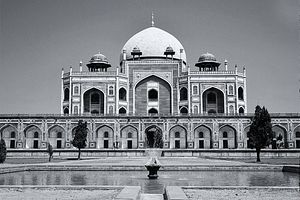Delhi has witnessed the birth and fall of several rulers, including the great Mughals, for hundreds of years before and during British rule. Though one of the most populated cities in India now, Delhi remains punctuated with historical imprints in the form of about 1,200 heritage sites. But the cash-strapped Archaeological Survey of India, a government agency mandated to look after cultural monuments, has barely managed to conserve fewer than 200 of those architectural treasures, leaving the rest to decay naturally or be claimed by the city’s homeless as their dwelling places.
Amid the budget shortage and resistance from squatters, there emerged a savior. Ratish Nanda, a conservation architect and the chief executive of a non-governmental organization, Aga Khan Trust for Culture, has helped prevent several ancient monuments from dying a natural death, through unique private-public partnership projects his group has undertaken. Nanda was once physically attacked by some squatters in Delhi, who saw him as a threat.
He remains determined to save the city’s heritage. A group of photography enthusiasts visited one of his ongoing projects in the Nizamuddin district in central Delhi to capture the impact and the challenges of his work.












































